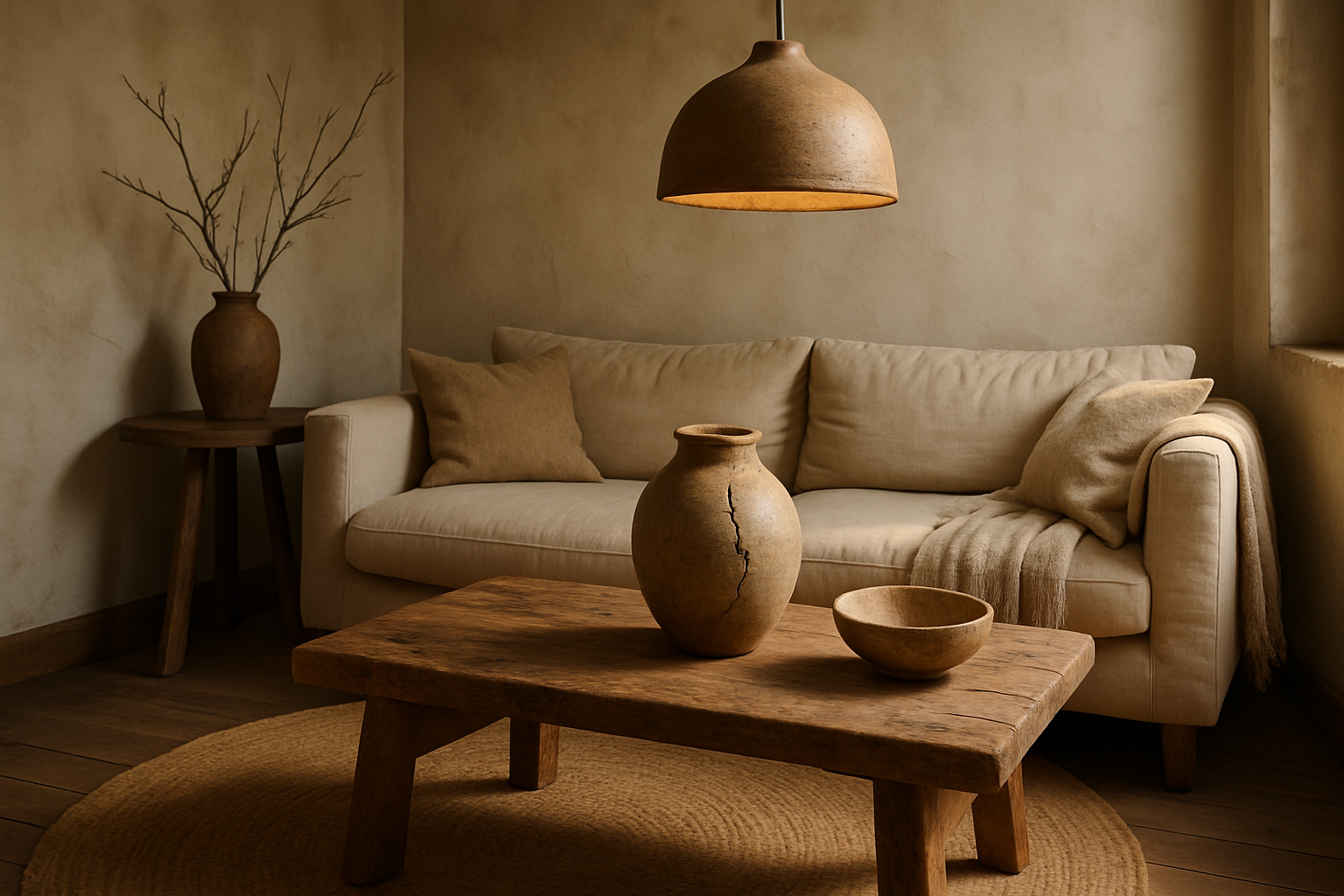Whimsical Wabi-Sabi: Embracing Imperfection in Home Design
In a world obsessed with perfection, a refreshing design philosophy is gaining traction among homeowners and interior designers alike. Whimsical Wabi-Sabi, a fusion of Japanese aesthetics and playful creativity, is redefining how we approach our living spaces. This article delves into the art of embracing imperfection, celebrating the beauty of the worn and weathered, while infusing spaces with a touch of whimsy and joy.

The Roots of Wabi-Sabi
Wabi-Sabi is an ancient Japanese philosophy that finds beauty in imperfection and incompleteness. It emerged from Buddhist teachings and tea ceremonies, emphasizing simplicity, naturalness, and the acceptance of reality. Traditionally, Wabi-Sabi aesthetics favored asymmetry, roughness, and intimacy, celebrating the marks of time and use on objects and spaces.
In its purest form, Wabi-Sabi encourages a mindful approach to living, urging individuals to find contentment in the imperfect and impermanent nature of life. This philosophy translates into interior design through the use of natural materials, muted color palettes, and objects that show signs of age and wear.
The Whimsical Twist
The whimsical element introduces a playful counterpoint to the often austere nature of traditional Wabi-Sabi. It infuses spaces with personality, color, and unexpected elements that bring joy and levity. This fusion creates a unique aesthetic that balances tranquility with creativity, allowing homeowners to express their individuality while maintaining a sense of calm and authenticity.
Whimsical Wabi-Sabi might incorporate handcrafted items with visible imperfections, paired with bold, imaginative accents. For example, a room might feature a weathered leather armchair alongside a vibrant, abstract painting or a collection of mismatched, colorful ceramics displayed on rough-hewn wooden shelves.
Implementing Whimsical Wabi-Sabi in Your Home
Embracing this design philosophy doesn’t mean letting your home fall into disrepair. Instead, it’s about curating a space that feels lived-in, loved, and full of character. Here are some ways to incorporate Whimsical Wabi-Sabi into your home:
-
Embrace natural materials: Use wood, stone, and textiles with visible grains, knots, and textures. Allow these materials to age gracefully, developing patinas that tell the story of your home.
-
Incorporate handmade items: Fill your space with artisanal pieces that showcase the human touch. Handwoven rugs, pottery with slight irregularities, and hand-painted furniture all add warmth and uniqueness.
-
Mix old and new: Combine antique or vintage pieces with modern elements. A contemporary sofa might sit comfortably next to a weathered trunk repurposed as a side table.
-
Add whimsical touches: Introduce unexpected elements of fun and creativity. This could be a colorful mural, quirky sculptures, or playful patterns in unexpected places like the ceiling or inside cabinets.
-
Celebrate imperfections: Instead of hiding cracks or wear, highlight them. The Japanese art of Kintsugi, which repairs broken pottery with gold, is a perfect example of this principle.
The Psychology of Imperfection in Design
Adopting a Whimsical Wabi-Sabi approach to home design can have profound effects on mental well-being. In a society that often promotes unrealistic standards of perfection, creating a space that embraces flaws can be liberating and stress-reducing.
Studies have shown that living in environments that allow for imperfection can decrease anxiety and increase feelings of comfort and authenticity. The whimsical elements add an extra layer of positive emotion, triggering joy and playfulness that can counteract the stresses of daily life.
Moreover, this design philosophy encourages mindfulness and appreciation for the present moment. By surrounding ourselves with objects that show the passage of time, we’re reminded to cherish the now and find beauty in the aging process – both in our homes and in ourselves.
Sustainability and Whimsical Wabi-Sabi
One of the most compelling aspects of this design trend is its inherent sustainability. By valuing imperfect and aged items, Whimsical Wabi-Sabi naturally aligns with eco-friendly practices. It encourages the reuse and upcycling of materials, reducing the demand for new products and minimizing waste.
This approach also promotes quality over quantity. Instead of constantly replacing items to keep up with fleeting trends, homeowners are encouraged to invest in well-made pieces that will age beautifully over time. This not only reduces consumption but also creates a more meaningful connection to our possessions and spaces.
The Future of Whimsical Wabi-Sabi
As we move towards a more conscious and personalized approach to home design, Whimsical Wabi-Sabi is poised to become a significant influence in interior trends. Its ability to combine mindfulness, sustainability, and individual expression makes it particularly appealing to millennials and Gen Z, who value authenticity and environmental responsibility.
We can expect to see this philosophy extend beyond residential spaces into commercial design, with restaurants, hotels, and offices adopting elements of Whimsical Wabi-Sabi to create more inviting and human-centric environments.
In conclusion, Whimsical Wabi-Sabi offers a refreshing antidote to the pursuit of perfection in home design. By embracing imperfection and infusing spaces with playful elements, we create homes that are not just visually interesting but also emotionally resonant and sustainable. As we learn to find beauty in the flawed and joy in the unexpected, we transform our living spaces into true reflections of our complex, imperfect, and wonderfully unique selves.





